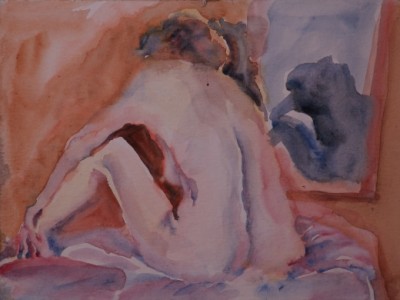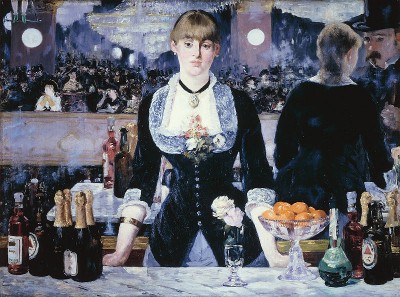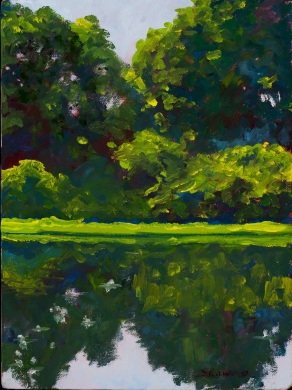In my last post, I talked about the different ways artists make use of shadows in their work, many examples of which could be found on a quick tour of the offerings of original art right here on Zatista. I found the same was true with artwork featuring mirrors – another way artists add depth and interest to a composition.
Mirrors are similar to shadows in that they extend or double the subject of a painting or photograph, providing an alternate or expanded reality. They can make an otherwise solitary figure less lonely because they at least have the company of their own reflection. Inanimate objects can seem more three dimensional, even more human when a mirror is present.
One of the most famous and controversial uses of mirrors in art is the 1882 painting by French Impressionist Edouard Manet in which a woman seems to be standing in front of her own reflection in a mirror behind a bar. Critics have long debated whether this is actually a reflection or if there is simply another woman behind her facing in the opposite direction. Look carefully at the details. What do you think? Cast your vote in the comments section below. Whatever your opinion, it remains a compelling and beautiful painting.
Having a mirror nearby can add both intimacy and distortion to an image. We behave differently when we are alone with a mirror, perhaps dropping our guard and revealing our true selves. But mirrors are also in a sense optical illusions and can never present a fully accurate version of reality.
Whether in polished glass or on the calm surface of water on a clear spring day, mirrored reflections will always be an appealing element in an artwork, drawing us in the way they do in our daily lives. Who can resist a mirror?
Brian Sylvester is a guest blogger on WallSpin, and an artist on Zatista.
Related articles












Comments (0)